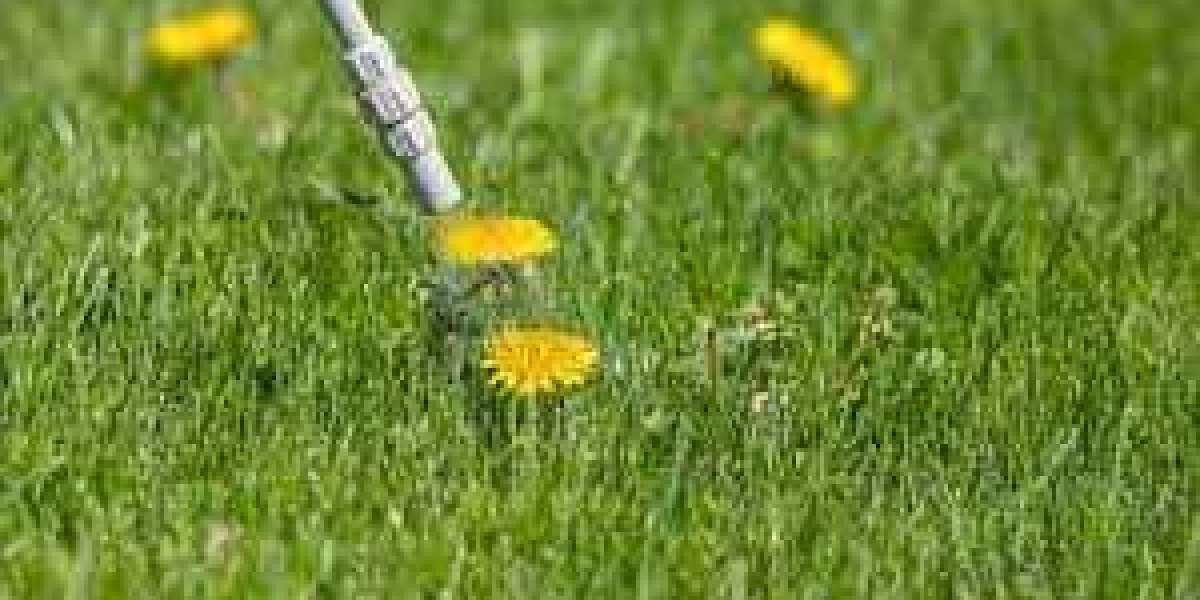A lush, green lawn is a source of pride for many homeowners. However, achieving and maintaining that perfect yard is not always easy—especially when pesky weeds decide to invade. These uninvited guests can quickly turn a well-manicured lawn into a patchy, unsightly mess. But don’t worry! In this guide, we’ll walk you through everything you need to know about preventing and managing weeds in your lawn.
What Are Weeds, and Why Are They a Problem?
Weeds are plants that grow where they aren’t wanted. They compete with your grass for sunlight, water, and nutrients, often leaving your lawn looking dull and uneven. Common lawn weed control include dandelions, crabgrass, clover, and chickweed. While some weeds might seem harmless, they can spread quickly, making them difficult to control if left unchecked.
Weeds don’t just affect the appearance of your lawn—they can also weaken the grass and make it more vulnerable to pests and diseases. That’s why learning how to manage them effectively is so important.
Understanding How Weeds Grow
To control weeds effectively, it helps to understand how they grow. Most weeds fall into three categories:
- Annual Weeds
These weeds complete their life cycle in a single year. Examples include crabgrass and chickweed. They grow quickly and produce seeds, making them a constant challenge. - Perennial Weeds
These weeds live for several years, coming back season after season. Dandelions and clover are common examples. They can spread through both seeds and root systems. - Biennial Weeds
These weeds take two years to complete their life cycle. During the first year, they grow leaves; in the second, they flower and produce seeds. Wild carrot is one example.
Knowing which type of weeds you’re dealing with can help you choose the right control methods.
Steps to Prevent Weeds Before They Start
The best way to deal with weeds is to stop them from growing in the first place. Here’s how you can prevent them:
- Mow Your Lawn Correctly
Mowing too short weakens your grass, giving weeds an open invitation to take over. Instead, set your mower to a higher setting so the grass stays thick and healthy. Taller grass shades the soil, making it harder for weeds to sprout. - Feed Your Lawn Regularly
Grass needs nutrients to grow strong. Fertilizing your lawn at the right time (usually in spring and fall) helps it outcompete weeds. Be sure to use a fertilizer suited to your grass type. - Water Wisely
Deep, infrequent watering encourages strong grass roots, which helps crowd out weeds. Shallow, frequent watering, on the other hand, can weaken your lawn and make it more susceptible to weed growth. - Aerate the Soil
Compacted soil prevents air, water, and nutrients from reaching the roots of your grass. Aerating your lawn every year or two helps relieve soil compaction and promotes healthy growth. - Seed Bare Spots
Bare spots in your lawn are like invitations for weeds to move in. Overseeding your lawn or patching bare areas can keep weeds at bay by filling the gaps with new grass.
Natural Ways to Control Weeds
If you prefer to keep things natural, there are several methods you can use to manage weeds without chemicals:
- Hand-Pulling
For small weed problems, pulling them out by hand is an effective solution. Make sure to remove the roots to prevent regrowth. - Mulching
Mulch can smother weeds and prevent them from getting the sunlight they need. While mulching is typically used in garden beds, it can also work along lawn edges. - Corn Gluten Meal
This natural byproduct of corn processing can be used as a pre-emergent herbicide, preventing weed seeds from sprouting without harming existing grass. - Vinegar Solution
A mixture of vinegar and water can be sprayed directly on weeds to kill them. Be cautious, as it can also harm your grass if applied carelessly.
Using Herbicides Responsibly
Sometimes, weeds are too widespread to manage naturally, and herbicides become necessary. Here’s how to use them effectively:
- Pre-Emergent Herbicides
These products prevent weed seeds from germinating. Apply them in early spring to target weeds like crabgrass before they start growing. - Post-Emergent Herbicides
These are used to kill weeds that are already growing. Spot-treat the affected areas to avoid damaging healthy grass. - Selective vs. Non-Selective Herbicides
Selective herbicides target specific types of weeds without harming your grass, while non-selective herbicides kill all plants they come into contact with. Choose wisely based on your needs.
Always follow the instructions on the herbicide label to ensure safety and effectiveness.
Lawn Weed Control: A Balanced Approach
When it comes to controlling weeds, balance is key. Combining preventative measures, natural methods, and targeted herbicide use will give you the best results. Focus on improving your lawn’s overall health, as a strong, thriving lawn is the best defense against weeds.
Tips for Maintaining a Healthy Lawn
Here are some extra tips to keep your lawn weed-free and beautiful:
- Stay Consistent
Lawn care is an ongoing process. Regular mowing, watering, and fertilizing are crucial for keeping weeds under control. - Monitor for New Weeds
Check your lawn regularly for signs of new weeds. Catching them early makes them easier to manage. - Choose the Right Grass
Some grass types are more resistant to weeds than others. Choose a variety that suits your climate and soil conditions. - Rotate Control Methods
Using the same weed control methods repeatedly can make weeds resistant over time. Mix things up to stay ahead of the problem.
Final Thoughts
Taking care of your lawn doesn’t have to be overwhelming. With a little effort and the right approach, you can enjoy a lush, green yard that’s free of pesky weeds. Remember to focus on prevention, act quickly when weeds appear, and prioritize the health of your grass.
By following these tips, you’ll not only improve the appearance of your lawn but also create an outdoor space you can be proud of. Happy lawn care!
 Meet Ups
Meet Ups
 Experiences
Experiences
 Learning Center
Learning Center
 Accommodation
Accommodation
 Roomie
Roomie
 Ride
Ride
 Spread the Word
Spread the Word
 Student Bazaar
Student Bazaar
 Jobs
Jobs
 Blogs
Blogs
 About StudentInsta
About StudentInsta


